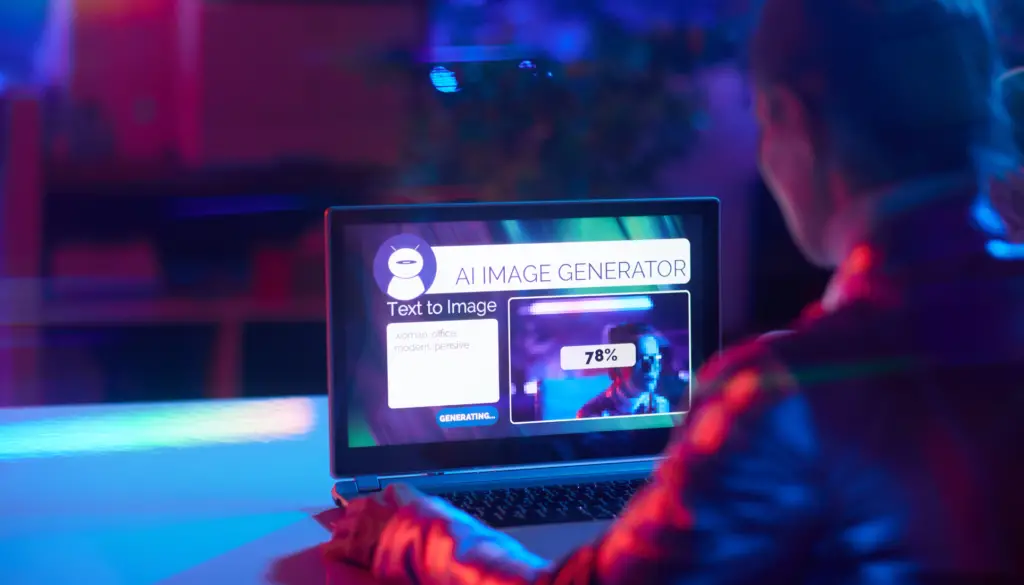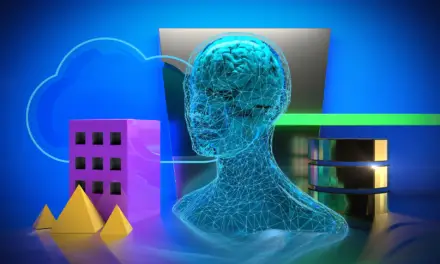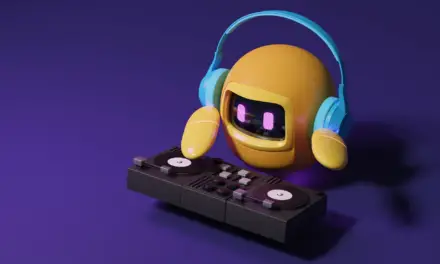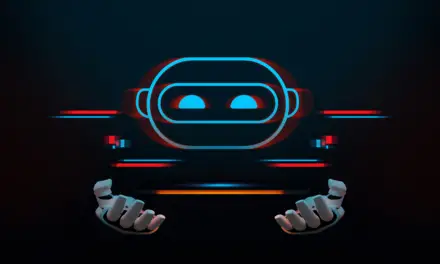In a world increasingly led by algorithms, one question emerges with a particular degree of fascination: Can Artificial Intelligence be creative? For centuries, creativity has been the hallowed ground of human uniqueness and evolution, a sanctuary where machines and computations dared not tread.
From Van Gogh’s ‘Starry Night’ to Beethoven’s Symphony No. 9, human creativity has always seemed intrinsically bound to our emotional complexities, cultural nuances, and even our irrationalities, faults and mistakes.
But as AI technologies evolve at an exponential rate, breaking barriers in understanding language, solving problems, and even mimicking human-like behavior, the boundary separating human artistry from machine capability is becoming increasingly blurred.
So, is the notion of creativity expanding to include our AI helpers?
Table of Contents
Can Artificial Intelligence Be Creative?

As of now, Artificial Intelligence can mimic forms of creativity by generating art, music, and even written content. However, this “creativity” operates within the parameters set by human engineers and is based on patterns in existing data. While technically impressive, AI lacks the emotional nuance, intrinsic motivation, and genuine originality that many consider hallmarks of human creativity. Therefore, while AI can produce creative-like outputs, it may not be genuinely creative in the human sense.
This raises an interesting question: Can one truly be creative if every idea might have already been thought of by someone else? If creativity can be defined as reimagining existing knowledge in new and innovative ways, then AI could potentially be considered creative. After all, it generates new concepts based on the data it’s been trained on, much like humans do with their life experiences. It’s subjective and open to interpretation.
Today’s AI systems can already produce stunning artwork and compelling music. Generative Adversarial Networks (GANs) are redefining the artistic landscape, creating original images after learning from existing patterns. In the area of music, Recurrent Neural Networks (RNNs) analyze existing compositions to generate new, intriguing melodies. But can they capture the emotional depth often attributed to human-created art, and is that emotional depth necessary to be creative?
How Does AI Perform When Tested on Creativity?
The University of Montana conducted a creativity study where ChatGPT scored in the top 1%.
The test evaluates various mental characteristics—fluency, originality, and flexibility in verbal assessments; elaboration, resistance to premature closure, and abstractness of titles in figural assessments.
Basically, the test looks at different ways your mind works when you’re trying to be creative. In one part, you use words to answer questions. The test checks how many ideas you can come up with (fluency), how unique those ideas are (originality), and how varied your ideas are (flexibility).
In another part, you draw pictures as answers. Here, the test checks how many extra details you add (elaboration), how well you deal with unclear situations to come up with something creative (resistance to premature closure), and how creative your titles for the drawings are (abstractness of titles).
Looking Closer at the Test’s Parameters
The parameters the test assesses are often the same elements lauded in human creativity. ChatGPT’s strength in ‘fluency’ and ‘originality’ could signify a high degree of creative capability.
However, it’s worth remembering that ‘fluency’ in generating ideas is a strong suit of machine learning models like ChatGPT—they can process and output information far quicker than humans.
Similarly, ‘originality’ could be a bit misleading; the algorithms can generate “new” combinations based on the vast data they’ve been trained on, but are these ideas truly original or just clever recombinations?
The test also showed ChatGPT slipping slightly in ‘flexibility,’ which might indicate a certain rigidity or limitation in its creative thinking—a trait uncharacteristic of human creativity, which is replete with nuance and adaptability.
The Unseen Dimension: Depth of Understanding
While the test measures creative responses based on specific criteria, it doesn’t—and perhaps can’t—measure depth of understanding or emotional resonance, which are core to human creativity.
It doesn’t evaluate the ‘why’ behind the creative output, an aspect where human creativity often shines. For instance, could ChatGPT add layers of meaning or emotion to a creative work, as a human could?
Someone creating a piece of art based on the horrors they experienced during war may have a lot more substance to draw upon for their creative endeavor.
The Guzik Factor – A Word of Caution
The comments by Guzik, the director of the study, about ChatGPT driving innovation shouldn’t be dismissed lightly, but they come with the need for temperance. If ChatGPT’s high scores are an artifact of the test design favoring what machine learning algorithms are inherently good at—rapid data processing, pattern recognition, etc.—then the claim that it could be a driver of ‘creative’ innovation needs to be taken with a grain of salt.
So, do the test results conclude that ChatGPT truly creative? The answer might rest in the gray zone. While its performance on the test is impressive, the nature of the test itself may play to the strengths of machine learning models, creating a semblance of creativity that may not fully capture the nuanced and multi-dimensional aspects of human creative thought.
While ChatGPT may indeed become a driver of innovation, whether it achieves the hallowed status of ‘creator’ remains an open question, warranting further scrutiny and debate.
What Is True Creativity? The Elixir of Human Ingenuity
When we talk about creativity, we’re venturing into a realm that defies straightforward definitions or formulas. True creativity is often described as the synthesis of imagination, originality, and emotional resonance, crafted through a complex interplay of cognitive, emotional, and social processes.
The Cognitive Effect
At the cognitive level, creativity often begins with divergent thinking—generating a multitude of ideas followed by convergent thinking—filtering and refining these ideas into a singular, compelling concept. This cognitive dance is more than mere problem-solving; it’s a nuanced negotiation between the rational and the abstract.
Emotional Resonance
What elevates creative works from good to unforgettable is emotional resonance—the capacity to evoke strong emotional responses from others. Whether it’s the gut-wrenching notes of Billie Holiday’s “Strange Fruit” or the mesmerizing strokes of Da Vinci’s “Mona Lisa,” the artist’s emotional imprint becomes a shared experience, touching audiences on a deeply personal level.
An artist or writer may even know the emotions they want to stir up in their viewers or readers long before their piece is created and AI may not be able to complete on this level.
Cultural Context
Creativity is not created in a vacuum but is influenced by cultural, social, and even political factors. The graffiti art of Banksy, for example, gains much of its potency from its commentary on social issues, while Lin-Manuel Miranda’s “Hamilton” resonates due to its revolutionary approach to American history and musical theater.
Iconic Examples
When Steve Jobs introduced the iPhone, he didn’t just create a new gadget; he revolutionized the way we interact with technology and with each other. His creativity lay not just in the product but in envisioning a new way of life.
Similarly, Marie Curie didn’t merely discover radium; she ushered in a new era of scientific thought and medical innovation, challenging established norms about women in science along the way.
Beyond Imitation
AI may be able to mimic styles or generate novel combinations of existing data, but it lacks the deeply personal, emotionally charged, and culturally informed nuances that make creativity so profoundly human.
In essence, true creativity isn’t just a novel idea or an aesthetic output; it’s a deeply human act that connects us to each other and to the world in ways that are meaningful, surprising, and often transformative. Until AI can not only generate but also understand and feel the weight of such connections, its ventures into the creative realm may remain mere echoes of human brilliance.
Related Article: Can Artificial Intelligence Ask Questions? (The Future of Curiosity)
How AI Mimics Creativity: The Illusion of Artistry in Algorithms
In a landscape rife with awe-inspiring machine learning projects, you can’t help but wonder: is what we’re seeing true creativity or simply sophisticated mimicry? AI’s foray into the arts—be it visual, musical, or literary—is undeniably intriguing. Yet, understanding how this creativity is generated offers insights into both its limitations and uncanny similarities to human ingenuity.
Data-Driven Artistry
At its core, AI creativity is a product of data. Whether generating a painting or composing a melody, AI utilizes a vast corpus of existing works to identify patterns, styles, and structures. Midjourney or DALL-E, for example, can generate images that are novel combinations of pre-existing styles and subjects, but they’re invariably constrained by what they’ve ‘seen’ in their training data.
Similarly, OpenAI’s Jukebox can compose songs in the style of famous artists, but those compositions are remixes of pre-existing musical concepts.
Parallels with Human Creativity
Interestingly, human creativity can also be seen as a form of data processing. Our brains synthesize life experiences, social interactions, and cultural exposure into new ideas or expressions. Vincent van Gogh didn’t invent the concept of a starry sky, but his unique experiences and emotional state transformed it into an iconic painting. In this sense, both humans and AI leverage pre-existing ‘data,’ albeit in profoundly different ways.
The Unbridgeable Gap: Intent and Emotion
While both humans and AI draw from a reservoir of existing information, the fundamental difference lies in the intent and emotional resonance. A human artist may draw upon personal experiences of love, loss, or joy, infusing their work with an emotional depth that resonates with others.
AI, however, lacks this emotional layer. It generates art without experiencing the jubilation of a Mozart or the anguish of a Frida Kahlo. It’s this emotional vacuum that can make AI-generated art from applications such as Midjourney seem a little hollow by comparison.
Originality: A Human Monopoly?
Another point of departure is the notion of originality. Humans can question societal norms, challenge status quos, and introduce groundbreaking paradigms—think of Picasso’s Cubism or Virginia Woolf’s stream-of-consciousness narrative.
AI, on the other hand, cannot envision beyond its dataset. It cannot ponder existential questions or aim to disrupt societal constructs through its ‘creativity.’
Case in Point: AI in Literature
If you look at the area of literature. While ChatGPT can generate text that mimics human writing, including poetry and short stories, it cannot imbue its words with the experiential richness of a Maya Angelou or the piercing social critique of a George Orwell. It churns out words, not worlds.
So, while AI can generate outputs that mimic creativity, the mimicry lacks the emotional, intellectual, and societal contexts that make human creativity so deeply compelling. It’s akin to a parrot reciting Shakespeare; the words may be the same, but the understanding, the intent, and the soul are conspicuously absent.
And until AI can traverse this emotional and intellectual chasm, its ‘creativity’ will remain a fascinating yet fundamentally limited imitation of human brilliance.
Toward a Future of Creative Machines: The Milestones to Genuine AI Artistry
What would it take for AI to become truly creative? Though the leap from mimetic artistry to genuine creativity seems astronomical, the path toward such a future is not entirely nebulous. Let’s unpack the pivotal milestones that would signal a transition to a new era of machine-generated creativity.
A Leap in Semantic Understanding
The first step in nurturing AI creativity would be enhancing its semantic understanding. Today’s models lack the nuance and contextual awareness inherent in human thought. Innovations in natural language processing and knowledge representation would allow AI to grasp not just the “what” but the “why” behind creative works, be they visual, auditory, or textual.
The Advent of Affective Computing
While machines can recognize and categorize human emotions to some extent, they cannot “feel” or understand the emotional significance behind creative works. Advances in affective computing, where machines can sense, interpret, and even respond to human emotions, would provide the emotional substrate upon which truly creative AI could be built.
Goal-Oriented Creativity
Currently, AI lacks the ability to set its own objectives. Its “creativity” is always directed toward fulfilling human-defined goals. Achieving true AI creativity would likely involve creating algorithms that can set their own objectives and evaluate their work based on self-defined criteria. In essence, we’re talking about AI that seeks to create for the sake of creation itself.
Ethical and Philosophical Considerations
Before AI can be creative, it must navigate a complex labyrinth of ethical considerations. Who owns the rights to an AI-generated painting or novel? How does society respond if AI-created content is offensive or politically charged? These ethical questions would require legal innovations that keep pace with technological advancements.
Autonomous Learning and Adaptation
For an AI to be genuinely creative, it would need the ability to learn autonomously, adapting its creative methods based on feedback from both its environment and its own generated outputs. This level of self-regulated learning would be a monumental leap in machine learning, perhaps requiring entirely new architectures beyond the current neural network paradigms.
Consciousness: The Final Frontier?
The ultimate question in AI creativity, perhaps, is whether machines would need to possess some form of consciousness. Can a machine without subjective experiences, without likes or dislikes, ever truly be creative? The notion is as thrilling as it is terrifying and steps squarely into the realms of philosophy and metaphysics.
Final Thoughts
The journey toward truly creative AI is strewn with technological, ethical, and philosophical challenges. Yet, each of these milestones represents an opportunity for a seismic shift in how we understand creativity, intelligence, and even consciousness.
Will we reach a point where AI becomes a co-creator rather than a mere tool, a digital partner in the ever-evolving tapestry of human culture? Only time—and considerable ingenuity—will tell.



